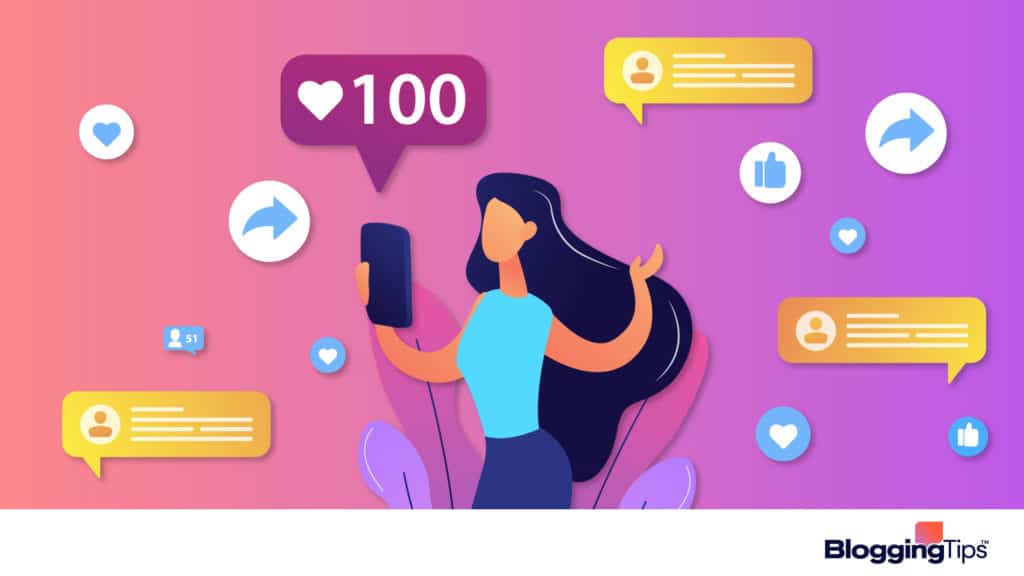As a consumer, brand, and business person, you know the benefit of user-generated content.
Whether it’s an unboxing video or customer review, user-generated content, or UGC, is a crucial part of a brand’s content strategy.
In many cases, it’s what elevates a brand to the next level.
But what’s the best type of UGC for your brand?
More importantly, how do you implement it?
Furthermore, do you even need it?
Keep reading to find out.
- What is User-Generated Content?
- What is the Purpose of User-Generated Content?
- Why is User-Generated Content Important?
- Common Types of User-Generated Content
- What Types of User-Generated Content Are Most Popular?
- Examples of User-Generated Content
- Where to Find Ideas & Inspiration for User-Generated Content
- How Do I Get User-Generated Content?
- Process of Collecting User-Generated Content
- How to Collect User-Generated Content
- Best Practices for User-Generated Content
- User-Generated Content Tools to Save Time and Money
- Other Related Content Types to Check Out
- Frequently Asked Questions
- Wrapping Up
What is User-Generated Content?
User-generated content is digital content created by content creators for brands.
Online influencers, everyday consumers, and other brands can and do create user-generated content that helps brands promote their products.
Difference Between User-Generated Content and Branded Content
There’s a big difference between branded content and user-generated content.
Branded content is sponsored by a company, while user-generated content isn’t.
For example, a photo of an influencer drinking a Pepsi would be user-generated.
On the other hand, a sponsored advertisement would be posted by Pepsi and have the little “Sponsored” tag.
What is the Purpose of User-Generated Content?
User-generated content is designed to engage viewers and draw in new traffic.
Whether you’re an influencer or a brand, content is king.
UGC should be a key feature of your digital marketing campaign.
Why is User-Generated Content Important?
When asking why user-generated content is important, you should take a step back and view UGC from the consumer’s perspective.
In a time when written reviews are in every corner of the web, videos and images speak a thousand words.
Visual content shows the product in the real world instead of behind filters or video edits.
Benefits of User-Generated Content
A user will see two main benefits each time they post brand-related content.
First, it helps build their online following.
Second, it increases their chances of free products from their chosen brand or a similar one.
Brands benefit from UGC because consumers will see their products in use.
This allows brands to use UGC to demonstrate the truth behind product claims they may have made.
It also boosts interaction around the brand and a specific product.
Common Types of User-Generated Content
User-generated content comes in all forms, but the three most common types of content are social media content, forum content, and reviews or testimonials.
Each of these has its own levels of importance for brands and consumers.

It’s also worth noting that each type of user-generated content will have a different impact depending on your industry or product.
So, when you start developing a user-generated content strategy, consider each option carefully before choosing which best suits your brand.
- Social Media Content: Social media content is likely the most well-known type of user-generated content available. Influencers will do unboxings, test out products, or give a video overview of the product and its features. Consumers typically put a lot of trust in social media UGC.
- Reviews and Testimonials: Another popular type of user-generated content is customer reviews. Product and business reviews help businesses expand their digital footprint while helping consumers make informed choices.
- Forum Content: Forums like Reddit or Quora are popular places for users to discuss products. Consumers can share experiences, answer questions, and gain more information about a product before purchasing.
- Case Studies: Case studies allow brands to examine real-world use cases by existing customers. Case studies typically involve entities or individuals as opposed to physical products. They’re also a bit more intricate than standard UGC.
What Types of User-Generated Content Are Most Popular?
With nearly 147 million people on social media daily, it’s no surprise that it’s the most popular place for user-generated content.
For example, as of this writing, the hashtag #productreview has more than one billion views on TikTok.
That number highlights precisely how crucial user-generated content is to consumers.
Reviews and testimonials are the next most popular type of user-generated content.
Many users consult dozens, if not hundreds of reviews before making a purchase.
From Amazon to Goodreads, reviews are an invaluable source of information users tap into before spending money.
Examples of User-Generated Content
Examples of user-generated content are abundant online.
In some cases, UGC is generated by users from the ground up. In others, a brand might kickstart a UGC campaign with a hashtag, then let the content snowball. Here are a few quick examples.
1. Apple #ShotOniPhone
In early 2022, Apple launched its #ShotOniPhone campaign.
This campaign encouraged users to flood social media with images taken on their new iPhone 13s.
The purpose was to show off the iPhone’s high-tech camera.
In April, Apple announced several winners.
As of this writing, the hashtag appears on more than 26 million posts on Instagram.
2. National Geographic #WanderlustContest
In 2015, National Geographic launched its #WanderlustContest.
The social media-based contest was intended to showcase amateur photographers with Nat-Geo-style images.
National Geographic often hosts photography contests, but this was the first focused on UGC.
3. Calvin Klein #MyCalvins
As a throwback to the 80s-era branding, Calvin Klein kicked off the #MyCalvins campaign in 2021.
Users were encouraged to share their CK style on Instagram for a chance to grace Calvin Klein’s social page.
Where to Find Ideas & Inspiration for User-Generated Content
Coming up with ideas for user-generated content might seem like a hassle, but you’d be surprised at how easy it can be.
Once you find an idea, developing ways to expand it will be easy.
How Do I Get User-Generated Content?
Acquiring user-generated content involves turning your consumers into brand advocates.
In some cases, you’ll barely need to put out any effort.
For example, big brands like Apple won’t need to do much courting.
However, smaller companies and startups will have a bit of legwork.
First, determine which social networks work best for your brand.
TikTok, Instagram, and YouTube are the biggies, but each has pros and cons.
Once you’ve chosen a platform, start seeking out users who already enjoy your product.
As you find users, share their posts, stitch their videos, and give them callouts.
These actions will help boost brand loyalty and increase UGC and engagement.
Process of Collecting User-Generated Content
Curating the best user-generated content takes time and skill. If you’re a newer brand, you’ll need to add a great deal of patience to that list.
Regardless of your brand’s status, you should follow these steps.
- Choose your platform
- Audit existing content
- Identify trends
- Develop a campaign strategy
- Make contact
How to Collect User-Generated Content
Now, let’s discuss the steps to collecting user-generated content in more detail.
Each step could vary from brand to brand, but the overarching rules are the same.

1. Choose Your Platform
The first step in gaining quality UGC is choosing the right platform.
Short-form social content is typically best for UGC because the hashtags that accompany it are a valuable feature.
However, it’s not as simple as simply picking TikTok over Instagram and being done.
Demographics across social platforms vary wildly, so you’ll need to find out where your base is.
2. Audit Existing Content
Next, take a look at your brand’s current footprint. Your footprint includes all mentions, ads, and posts about your product or brand.
This audit will give you a feel for who knows about your product and which demographics you need to tap.
As you perform your audit, take note of who seems most interested in your brand and build from there.
3. Identify Trends
When looking for user-generated content, you need to ensure you have your finger on the pulse of social media.
Social media trends include hashtags, vernacular, and user activity, and they come and go weekly.
You need to know what those trends are and how to ride each into the next.
4. Develop a Campaign Strategy
Your campaign strategy will take form once you’ve identified trends and your online presence.
A good digital strategy will include influencer outreach, a solid social media presence, and often a giveaway or contest.
5. Make Contact
The final step to gathering user-generated content is to make contact with creators.
There are a few ways you can do this.
The simplest is to reach out via email or direct message to discuss some type of collaboration.
However, some brands or companies will send users a free product in exchange for an honest review.
Best Practices for User-Generated Content
Keep the following best practices in mind as you gather user-generated content for your marketing plan.
Adhering to best practices is an easy way to ensure your plans are effective and, most importantly, not annoying to your base.
1. Be Authentic
A crucial part of your social media presence involves authenticity.
Most consumers are more likely to trust a content creator’s review than one provided by a brand.
For that reason, UGC is crucial to ensuring consumer acceptance.
2. Be Trustworthy
In the real world, people ask people they know for recommendations.
However, approximately 80% of users now consult UGC when purchasing decisions.
Encouraging user-generated content and backing it up in practice will go a long way in proving yourself trustworthy.
3. Have Attainable Goals
Your UGC goals might vary a bit from your standard business goals, but they must be attainable.
Some common goals relating to user-generated content would be to increase engagement, collaborate with influencers, or launch a UGC-fueled contest.
4. Be Entertaining
Social media is often about short quips and quick responses.
As a brand, you need to perfect the brief, witty response.
The perfect example is Xbox UK’s response to a teen who built the entire universe in Minecraft.
Xbox Tweeted the user-generated content with a witty sentence, then let users explore the product.
User-Generated Content Tools to Save Time and Money
In a perfect world, user-generated content would be free.
Fortunately, in many cases, it is. However, you can invest in a few tools to ensure your UGC is top-notch.

What is a User-Generated Content Tool?
User-generated content tools simplify curating content, especially when you can’t think of things to write about.
These tools will help you expand your reach and boost engagement more efficiently than from the ground up.
Our Favorite User-Generated Content Tools
Our favorite user-generated content tools include blogging and social media tools, as well as content templates.
1. Blogging Tools
Blogging tools will help you create all types of blog content without the hassle of coding or designing.
Tools you might consider are keyword research tools, infographic generators, or stock photo sites.
Each has a learning curve, of course, but they’ll make your blog more appealing to users.
2. Social Media Tools
Social media tools take the pain out of crafting your online presence.
Post schedulers, graphic design programs, and content generators are just a few examples.
These tools will help you create and publish professional posts that engage your audience.
3. User-Generated Content Template
Blog post templates provide a baseline for your posts.
Instead of spending an hour figuring out how to write a blog post, a template will lay it out for you.
All you’ll need to do is fill in your images and content, and you’ll be all set.
Other Related Content Types to Check Out
In addition to user-generated content, here are a few other content types to check out.
- Curated Content: Content you gather from other brands and share on your own accounts is called curated content.
- Sponsored Content: When you and another brand join forces to promote each other’s brands, that’s called sponsored content.
- Blog Post Template: Blog post templates help you organize website and blog content in a streamlined manner.
Frequently Asked Questions
Still confused about user-generated content?
Here are a few common questions.
Are there user-generated content agencies?
Yes, user-generated content agencies exist.
These agencies collaborate with influencers and prominent content creators to promote your content and boost conversions.
What are the best user-generated content jobs?
The most common user-generated content jobs are social media engagement coordinators.
Other titles include social media specialists, content partnerships managers, and content creators.
Wrapping Up
User-generated content is an integral part of any robust marketing campaign.
Gathering content will help you build an excellent reputation among consumers and long-term relationships with creators and influencers.
Most importantly, you’ll gain organic, honest reviews about your products you can use to back up each claim you make.
In doing so, you’ll highlight your brand’s trustworthiness and authenticity, which are invaluable to consumers.







